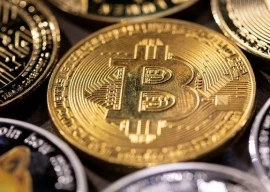When President Obama took office in 2008 he promised change that would save America from the recession. The rescue however was not targeted towards the productive economy, but for that part of the economy that had proven to be detrimental, or to be precise, parasitic. Although, massive intervention managed to keep the global economy afloat and provided a brief sigh of relief, it is only temporary because fundamental issues have not been addressed.
Before providing an objective conclusion in the upcoming article, it is vital to look at the real state of the US economy. In the 1990’s, the US government altered its calculation methods to make its numbers look better.
The Bureau of Labour Statistics stopped accounting for long-term discouraged workers, when added to the U-3 data, real unemployment stands today at 23%. 45.8 million People rely on food stamps and poverty is at 49.1 million, both numbers align with real unemployment. In addition, inflation levels are understated as the current calculation method allows for substitution of items that are rising in prices with those that are falling. It replaces home prices with owners’ equivalent rent and strips out food and oil prices. When applying the pre-1990 methodology for computing the CPI-U, the inflation figure is close to 7%. The 1980 methodology exhibits a gloomier picture of 12%.
Special Interests Preserving the Status Quo
In 2008, it became evident that “change” was just a marketing slogan. President Obama swiftly appointed policy makers that had connections to Wall Street or already served in the White House under the previous administration. Ben Bernake, Lawrence Summers, Timothy Geithner, Robert Rubin, William Dudley, etc are just a few examples.
There is a reason why such conflicts of interest exist in Capitol Hill: Obama netted billions from various segments of the FIRE economy and so policy was dedicated to restarting the parasitic FIRE economy instead of focusing on manufacturing and export.
Flawed philosophy of the FIRE economy (Wall Street)
There are several reasons why the FIRE economy is not sustainable, namely because of the following premises that it is based on:
• Credit is the engine for economic growth
• Borrowed consumption/investment can replace savings based consumption/investment
• A low interest policy (below inflation) to divert domestic & foreign savings into speculation
• Adopt a monopolistic “Too big to fail” mentality: Tax payers will burden a collapse
• Finance can substitute production.
• Profit from asset price inflation (stocks, real estate, bonds) caused by cheap credit, instead of profiting from the rise of the real fundamental values of business (stocks), housing or bonds
• Lobbying for deregulation & lack of transparency.
• Discourage under consumption. All economic growth depends on perpetual consumption.
• Returns from highly leveraged speculation (casino mentality) can replace profit from production.
In the 1980’s when the FIRE economy began to emerge in the US, $1 of debt was required to produce $1 growth in GDP, at its very height in 2005, $5 of debt was required for a $1 rise in GDP. There is direct correlation to the exponential rise in corporate, household ($11.6 trillion) and public debt ($15.2 trillion). Furthermore, we’ve seen reoccurrences of major crises with escalating severity. On all counts, the government intervened and transferred the losses of the financial sector onto the balance sheets of the state (taxpayers).
The FIRE economy is at its very end as the nation has reached peak credit; the interests on the accumulated debt are piling up and are eating a larger junk from the cash flows of households, businesses and government. It is diminishing the ability to save that is vital for future investments (job creation).
Thus, current government policy of reviving the FIRE economy and restarting the debt cycle is counterproductive and is only exacerbating a crisis.
In the next article of the “Global Financial Fiasco series” we will look at additional fundamental factors that are strongly indicating towards an impending financial crisis.
The writer is a freelance journalist and works for Muffathalle
Published in The Express Tribune, January 9th, 2012.
COMMENTS (6)
Comments are moderated and generally will be posted if they are on-topic and not abusive.
For more information, please see our Comments FAQ

1725612926-0/Tribune-Pic-(8)1725612926-0-165x106.webp)















Nice article. The picture is getting clearer. The US is adopting "casino" mentality in its financial management. In fact it treats the whole world as Las Vegas. Wren it goes, it will take the whole world along with it. Only those countries will survive, which have not betted on US like Afghanistan, N.Korea, Somalia may be Timbuktu.
The author should elaborate on the abbreviation:
FIRE = Finance Insurance Real Estate ( Finance of course includes Wall Street)
What hope is there for US, really? I don't see any of their candidates being able to solve the riddle. Ron Paul's media-celebrated platform will only stall the system, as it does not stimulate the cicrcular flow of income... I don't see a way out for them, unless they get someone who actually changes things, and not only advertises it.
This is brilliant. Great to see research behind articles being published rather than pure opinion as many writers portray. Very good piece Mr. Raza.
At the end of the day however the US sure looks a lot better than PAK
I just find it interesting and too funny how so much attention is being paid to the US given the problem in PAK
The underpinning theory behind his argument has been well presented, I've been doing my research on Wal lStreet and we all know it has done more harm than good but given the numerous points behind them by Zain Raza its become more evident that it is a parasite in our World Economy. The global financial fiasco is a must read for anyone slightly interested in knowing the real facts behind the agenda the US government and its efforts to slow down and perhaps even get rid of anything good that was once called capitalism..
Looking forward to your next article Zain